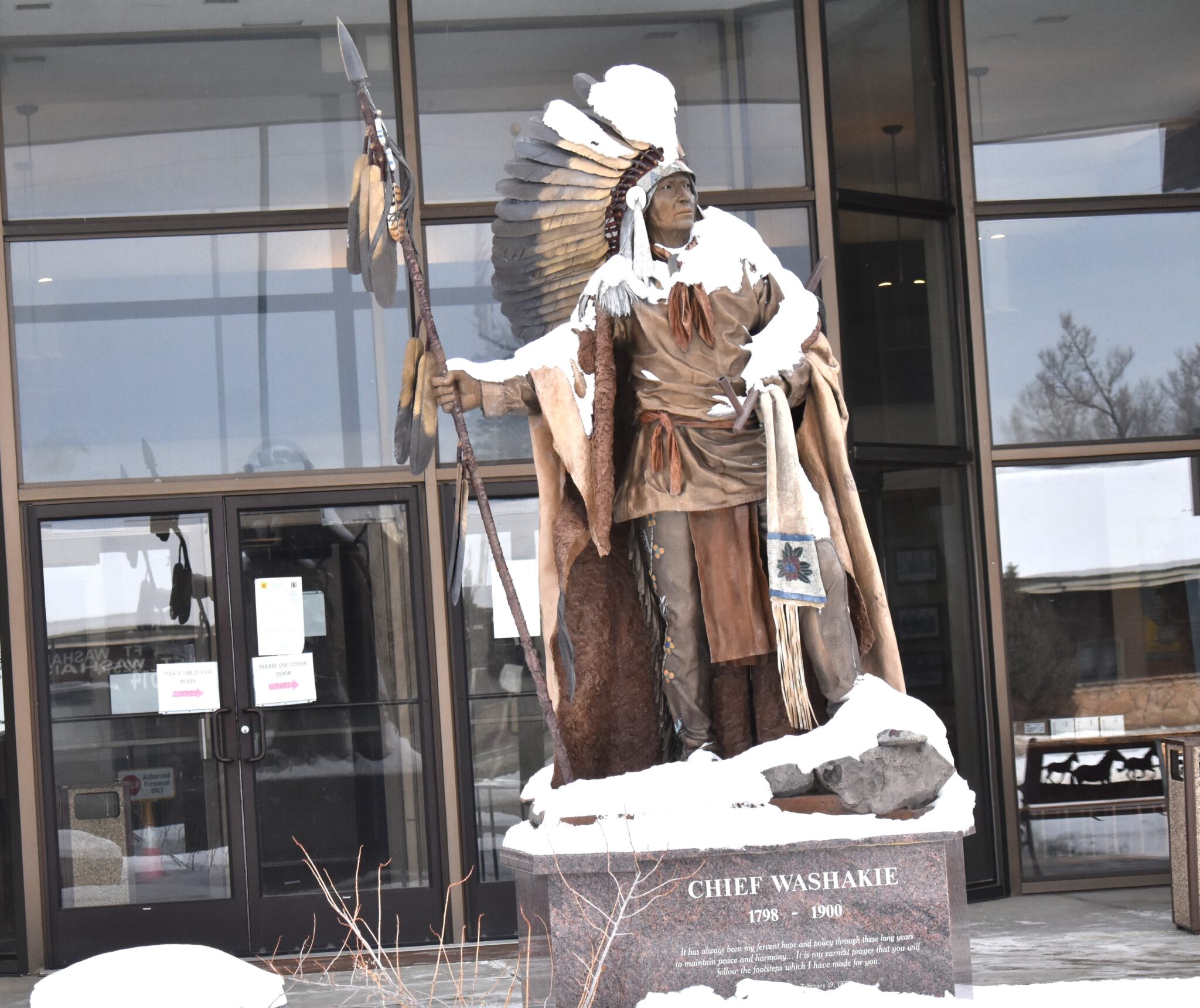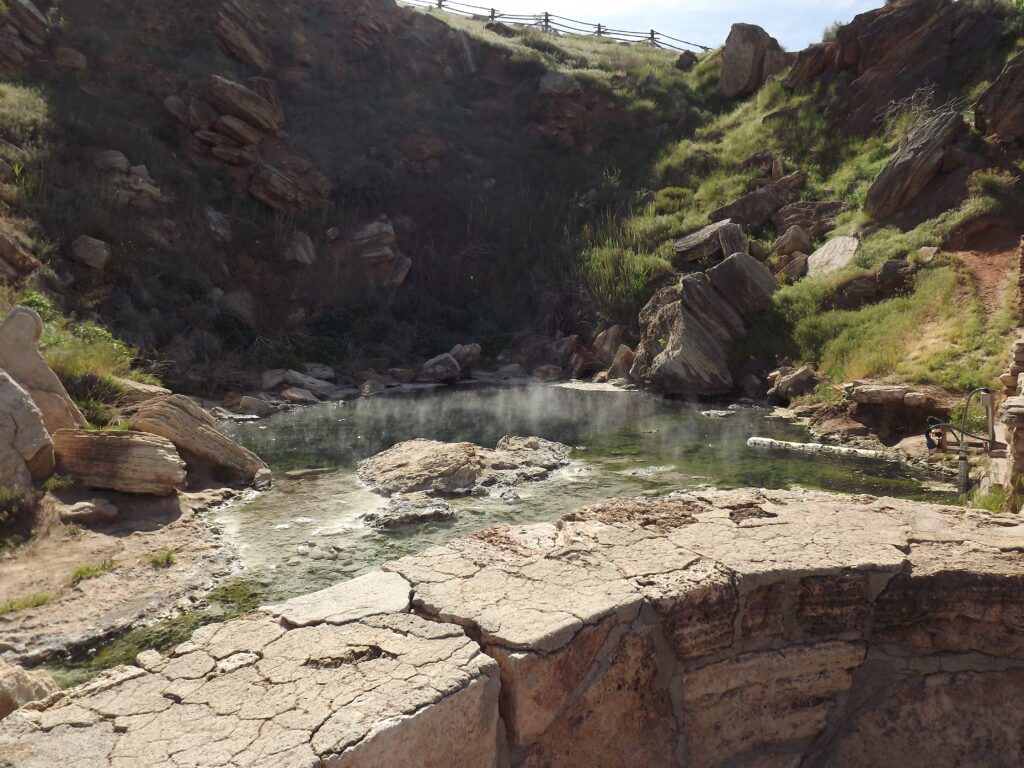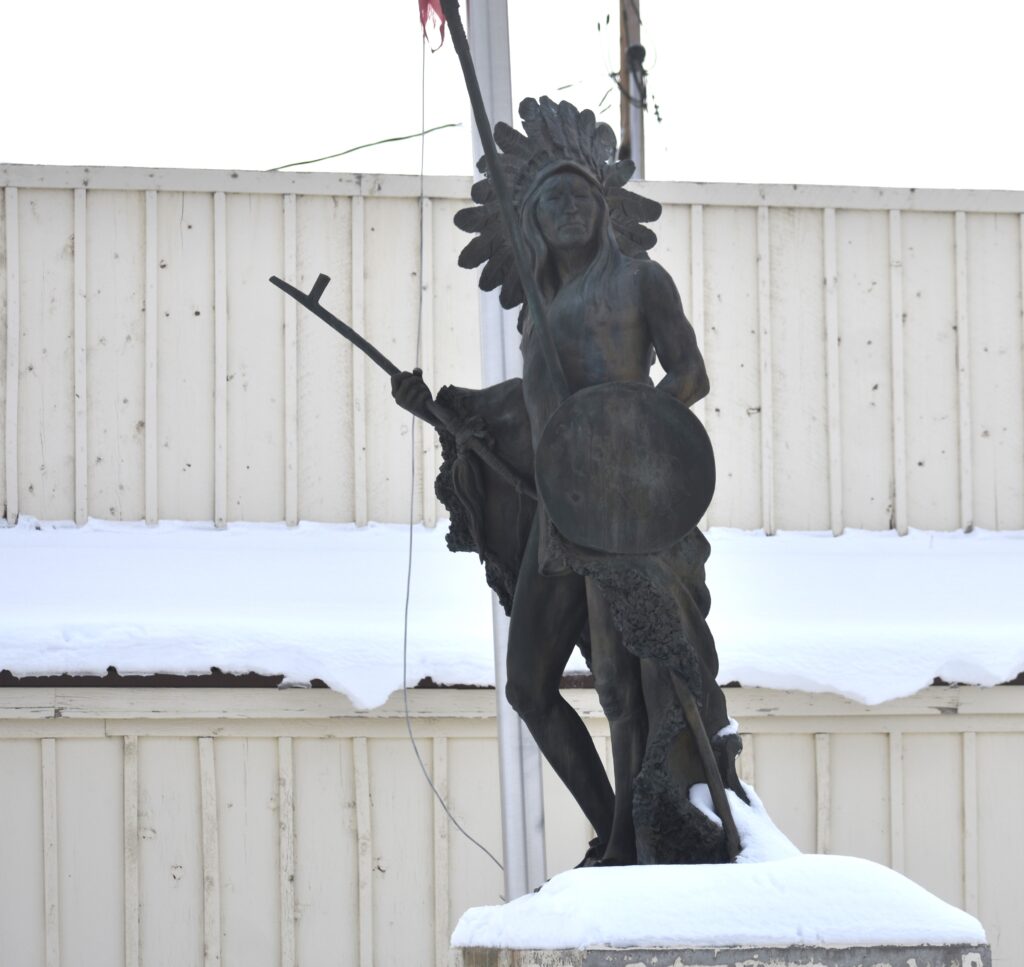News
History: Chief Washakie

Chief Washakie was a noted chief of the Shoshone people. He was born around about 1804 and became a prominent leader of his tribe during the mid-19th century.
He has always been considered as a friend to the white men, and in 1851, at the urging of mountain man Jim Bridger, Washakie led a band of Shoshones to the council meetings of the Treaty of Fort Laramie. Bridger and Washakie were fast friends, and in 1850, Bridger took one of Washakie’s daughters as his third wife.
Washakie was also instrumental in making a deal to sell the Hot Springs in Thermopolis, Wyoming, to the U.S. Government.
In the Thermopolis Independent, September 14, 1917, there is this story about the hot springs. – Chief Washakie – the story of Washakie, notable chief of the Shoshone Indians, has been told in legend and by mouth at many campfires built by old-timers of the Big Horn Basin. History tells us he was always friend to the white man during his entire reign over the tribe under his dominion, and in addition was wise and generous counselor to his own subjects.
Long before the white man had invaded the West, the Indians knew of the Springs which the Great Spirit had provided to alleviate the sufferings of his children, and it is told that many an Indian suffering from an attack of rheumatism came to the Springs and would stretch his body along huge log which extended out over the surface and lie there for days in the steam of the waters, thus accomplishing and getting the benefit in crude way of the healing waters that many now come thousands of miles by rail and pay hotel and sanitarium expenses to secure.
Later came the cowman on horseback from as far south as Texas, he having learned from Indian lore of the wonderful healing qualities of the water. Then the settlers built crude bath-houses along the banks of the river that they might come and camp for time and bathe little more comfortably in the waters.
But all this, within few years. Now there is at the command of the visitor modern sanitariums and bath-houses, masseuses attendants and physicians with all the accommodations that may be required.
Chief Washakie first gave a grant to the federal government of a tract of ten miles square, embracing the land on which the Springs are located, and later tract one mile square was deeded by the United States to the state of Wyoming. Many upon being told of the immense flow what is is known as the Big Spring— 18,600,000 gallons daily doubt the statement. Yet when it is known that at one time this one spring furnished the water for power to generate the electricity to light the Town of Thermopolis, its immense flow is more readily realized. Not only is there one spring, but many on the mile square owned by the state from which to draw these wonderful healing waters.

Washakie and the Shoshone tribe sold the land to the US Government and later Wyoming created Hot Springs State Park around the hot springs. Washakie’s wish was that some of the waters be free of charge. Today, the State Bath House is free to the public. The facility features an indoor pool and outdoor pool for soaking.
The Shoshone People often acted as scouts for General Crook in his campaign against the Sioux in 1876. These two articles, one from the Wyoming Industrial Journal, August 1, 1899, and the second from the Cheyenne Weekly Leader, August 17, 1876. Note that the second report was from Crook’s Goose Creek Camp, which was where present-day Sheridan now stands.
Journal – The last fight in which the Shoshones and Arapahoes were engaged against each other was in 1874, when the Shoshones were the allies of the white soldiers under Captain Bates, in fight against the Arapahoes at Bates’ Hole. In 1876 the Shoshones served as scouts and guides for General Crook in his famous campaign on the Rosebud against the Sioux, and under Chief Washakie they rendered very effective service. The Shoshones have generally been the friends of the whites.
Over sixty years ago, when Captain Bonneville first visited the region which is nowWyoming he was given cordial welcome by these Indians, who aided him in standing off the thieving Blackfeet who constantly harassed his little company of adventurers. In the various Indian troubles they have invariably aided the whites and have rendered extremely valuable assistance upon many occasions.
Leader –Big Horn Expedition, Camp on Goose Creek., Aug, 4.—Gen. Merritt with ten companies of the Fifth Cavalry, joined this command yesterday. Thus reinforced, this column numbers over 2,100 fighting men, divided as follows: Cavalry—Ten companies of the Fifth, ten of the Third and five of the Second Regiments—1,450 men. Infantry Four companies of the Fourteent, four of the ninth and two of the Fourth Regiments—425 men. Shoshone scouts, 225; Ute scouts, 20; white and halfbreed scouts and civilians, 80.
The Shoshone scouts were also along with Crook at the Battle of the Rosebud.

Although a friend of the white men, the Shoshone and Crow were traditional enemies. They fought for the rights to various hunting lands. This story from The Sheridan Post August 28, 1921 – Crowheart Butte. The first stop was made at noon almost in the shadows of Crowheart Butte, which Indian tradition tells us was the last scene of warfare between the Shoshone and Crow Indian tribes, who had been in long dispute over the privileges of that favored section of Wyoming which was the fall hunting grounds and winter home of the tribes. The bravery shown by the small band of Crows was so much appreciated by the Shoshones that they pitted a small force of their braves against an equal number of the Crows, with the understanding that they go to that flat summit and fight to the death, the victors to remain in possession of that territory. The Shoshones were victorious.
Crowheart Butte is located in rural Fremont County, near the town of Crowheart. Washakie killed his Crow opponent, and the Shoshone People retained the hunting country in the shadow of the butte.
Washakie was very intelligent, and he was also determined that his people should be educated. He gave land to Welsh clergyman John Roberts to establish a boarding school for Shoshone girls.
This from The Wyoming State Journal (Lander), December 22, 1922 – Mr. Roberts was a personal friend of old Chief Washakie, and had many visits and conversations with him. He recalls the chief as an intelligent, honest man with good command of English, which language he refused to speak, he felt conscious of too many errors in his attempts. It was through Mr. Roberts that Washakie gave one hundred and sixty acres of land to the school.
Washakie lived for many years on the Shoshone Reservation in Northwest Wyoming. The Sheridan Post, March 11, 1897 – Dying of Old Age Our friend, old Chief Washakie, who is 94 years old, and who is quite sick was visited by the Rev. Mr. Roberts the other day and requested Mr. Roberts to baptize him. Washakie said to him to that he is going away now and was glad that Washington knew his land that his children would have it and that the white men could not take it away from them. He said he was sorry to go away from his white friends and his children. He would like to stay longer, but he feared he was going to die and so he wished to be baptized. — Indian Guide
Then, carrying on the legacy of the warriors like Chief Washakie, a troop of cavalry was formed with Native American’s.
The Sheridan Enterprise, March 4, 1920 – Indian Troop to be Formed in State – Wyoming Soon to Have Only troop of Indians in Entire Country (Special to the Enterprise) Cheyenne. Wyo., Wyoming within a brief period will have the only troop of cavalry in the United States composed entirely of full-blooded Indians. This announcement is made by Adjutant General Timothy McCoy, who has returned from the Wind River reservation, where he conferred with Shoshone and Arapahoe leaders relative to recruiting a troop of national guard cavalry.
The suggestion was received with enthusiasm and the recruiting was begun immediately. Adjutant General McCoy’s success in his novel undertaking was aided by the fact, that he was able to converse with the Indian leaders in their tribal tongues. He has a considerable command of both Shoshone and Arapahoe.
Several of the members of the Indian troop will be grandchildren of old Washakie, the famous chief of the Shoshones. who died some years ago on the Wind River reservation. Adjutant General McCoy while at the reservation secured for the state museum a document of considerable historical interest.
It is the discharge of Chief Washakie from the Shoshone scouts, who were organized for a campaign against the Sioux in 1876, just after the Custer massacre. Colonel Edwards of Fort D. A. Russell who has been appointed inspector of cavalry for Wyoming, has departed, for Riverton, Thermopolis, Basin and Sheridan, where he will inspect troops of the First Wyoming cavalry. He will be accompanied from Riverton by Major Colley, assistant adjutant general. The towns will be visited in the order listed.

This monument to Washakie is in the Ft. Washakie Cemetary
Later a monument was raised to honor the old chief. The Sheridan Post, August 25, 1905 – Monument to Chief Washakie. A stone monument weighing 9,000 pounds and ordered by the United States government, for the grave of the late Chief Washakie of The Shoshones, has arrived at Rawlins from Boston, where it was cut, and will be sent to the Wind River reservation, where Washakie was buried. The monument is beautifully carved. On one side is the inscription: “Washakie, Chief of the Shoshones. Always loyal to the government and to his white friends; a wise ruler.” On the reserve side are the dates of Washakie’s birth and death, 1804-1900.
In 1979, Washakie was inducted into the Hall of Great Westerners at the National Cowboy & Western Heritage Museum in Oklahoma City, Oklahoma.
Washakie was a friend to the white men, and his legacy lives on in Wyoming. Even though he didn’t live in the Sheridan area, members of his tribe were scouts for the army, he was a friend of Jim Bridger, and helped to negotiate the 1851 Fort Laramie Treaty.


Shirley Korp
January 8, 2024 at 6:13 am
Very interesting historical article.